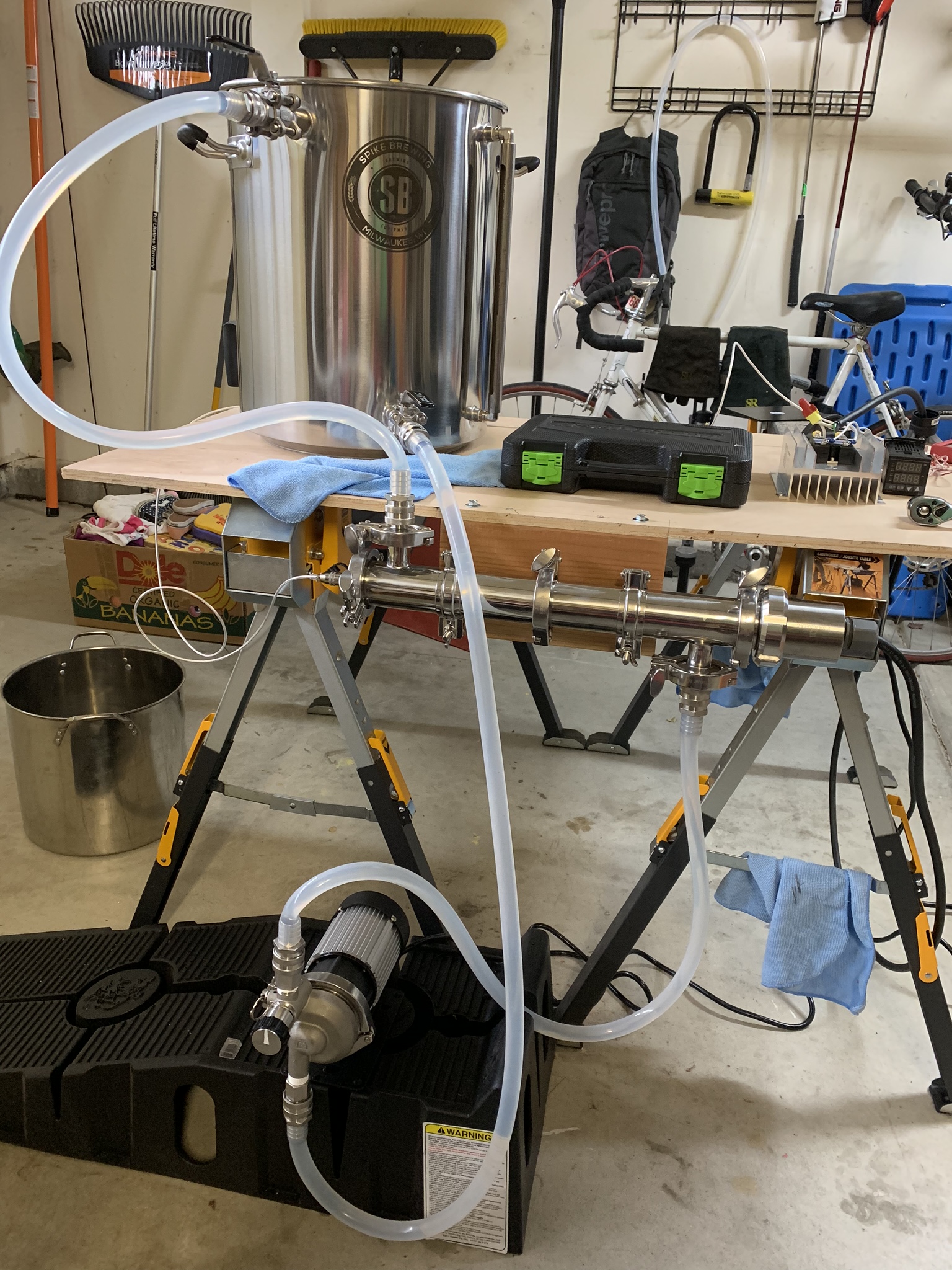jonathonhagerty
Member
- Joined
- Apr 10, 2019
- Messages
- 23
- Reaction score
- 3
Hi Homebrewers,
I am testing out my new RIMS tube with water tonight. I found I can hold 149 quite well.
To simulate a mash out, I set the pid to 168. After a few minutes, the temperature rose to 160. This is measured by a PT100 about 1.5 inches away from the end of the element inside the tube. However, my handheld thermometer read 175 at the sparge tube which resupplies the mashtun.
Why is the temperature so much higher during this ramp? Will it lead to scorching? Could it mean dead zones in my RIMS tube? I can’t imagine the PT100 is lagging so far behind the actual temperature when ramping, can it? I didn’t bother to wait to see if the entire mashtun stabilized. The rest of the liquid was still a few degrees below the pid probe reading (I’ll get the answer on this point tomorrow)
When I held at 149, the sparge tube temp was about 147. A few degrees lower due to the lack of insulation. (By the way I had to calibrate/correct my pid +5 to obtain this).
Thanks, Jon
I am testing out my new RIMS tube with water tonight. I found I can hold 149 quite well.
To simulate a mash out, I set the pid to 168. After a few minutes, the temperature rose to 160. This is measured by a PT100 about 1.5 inches away from the end of the element inside the tube. However, my handheld thermometer read 175 at the sparge tube which resupplies the mashtun.
Why is the temperature so much higher during this ramp? Will it lead to scorching? Could it mean dead zones in my RIMS tube? I can’t imagine the PT100 is lagging so far behind the actual temperature when ramping, can it? I didn’t bother to wait to see if the entire mashtun stabilized. The rest of the liquid was still a few degrees below the pid probe reading (I’ll get the answer on this point tomorrow)
When I held at 149, the sparge tube temp was about 147. A few degrees lower due to the lack of insulation. (By the way I had to calibrate/correct my pid +5 to obtain this).
Thanks, Jon

















































![Craft A Brew - Safale S-04 Dry Yeast - Fermentis - English Ale Dry Yeast - For English and American Ales and Hard Apple Ciders - Ingredients for Home Brewing - Beer Making Supplies - [1 Pack]](https://m.media-amazon.com/images/I/41fVGNh6JfL._SL500_.jpg)









